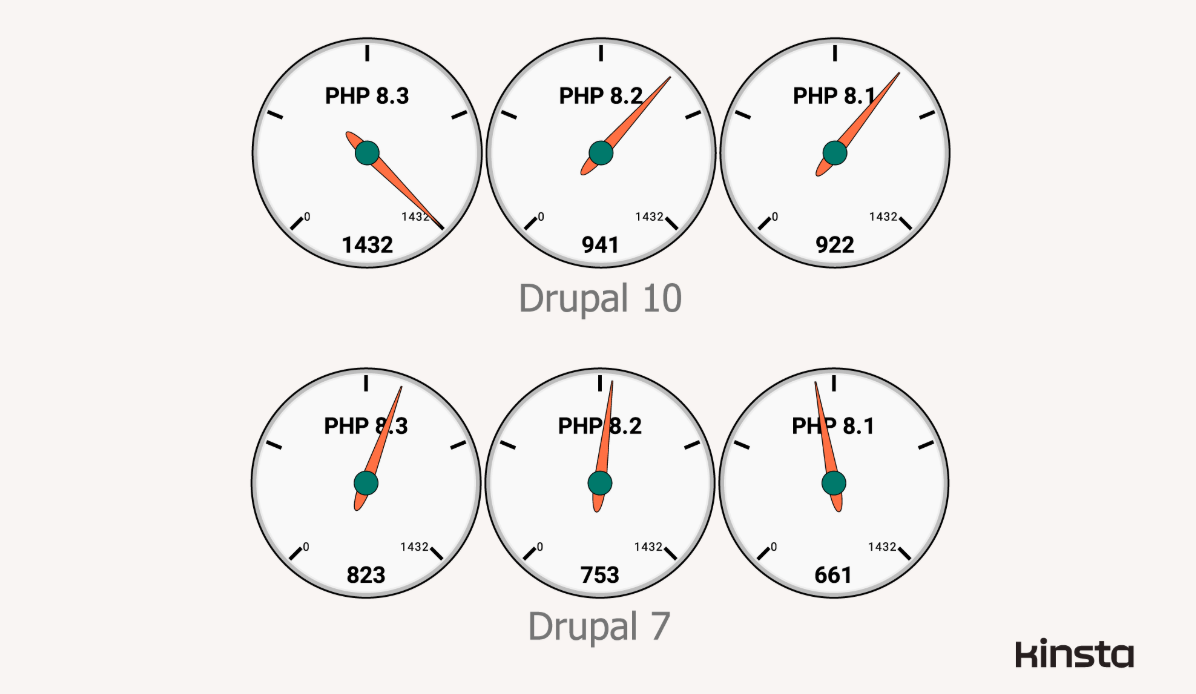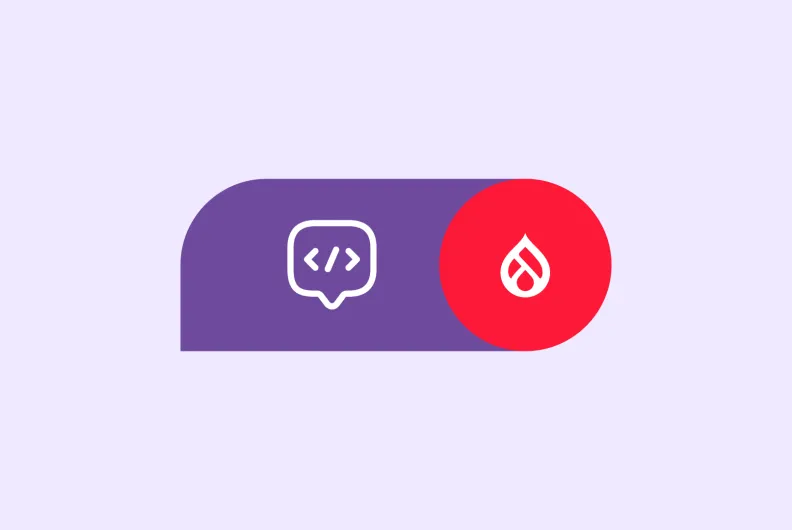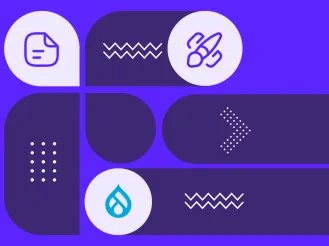Happy 30th Birthday, PHP! Fun Facts about the Language That Powers Drupal (and More)
As users click, scroll, and explore your website, something remarkable happens behind the scenes. A quiet engine hums in the background — not made of metal, but of code. Every button, feature, and piece of content is brought to life by a programming language working invisibly under the hood.
If your website runs on Drupal — or one of many other popular platforms — that language is PHP. And this year, on June 8, PHP celebrates a major milestone: its 30th birthday. While it may not get the same buzz as the latest app or gadget, PHP quietly powers much of the internet we use every day.
As a Drupal specialized agency, we couldn’t let this powerful engine go without the spotlight it deserves. To celebrate PHP’s birthday, we’ve gathered some fun and surprising facts that go beyond the code — an entertaining ride for developers and curious non-technical readers alike.

PHP, unplugged: fun and interesting facts
PHP is a server-side scripting language, meaning it runs on the web server — the software responsible for delivering your website’s pages to visitors’ browsers, like a waiter bringing your order to the table. PHP’s job is to tell the server what to do — and it speaks the language fluently.
PHP is built around a number of logical concepts to help organize and control what happens on your site. For example, there are “if” statements to make decisions (like “if it’s Monday, show the coffee banner”), loops to repeat tasks (like “show all blog posts”), arrays to neatly store things like menus or image galleries, and so on. And these simple examples are just the beginning — with professional coding, this powerhouse can do anything for your website.
PHP started as a personal experiment
Some of the world’s most useful inventions began as small, personal projects — and PHP is one of them. No one knew it would go on to power millions of websites and applications. In fact, its original purpose was to help manage one personal homepage. That’s what “PHP” first stood for: Personal Home Page.
Back in 1994, Rasmus Lerdorf created a few simple tools to track visits to his website. He wrote them in a language called Perl, which was popular at the time for quick scripting tasks. A year later, he rewrote the tools in C, a faster and more powerful programming language often used to build performance-heavy software.
It was when Rasmus shared the result with the public in 1995 that PHP officially began its journey. As it grew, it became far more than just a homepage helper. The name changed too — today, PHP stands for PHP: Hypertext Preprocessor.
PHP has a name that defines itself — literally
Another fun fact is that PHP’s current name is a clever (and delightfully nerdy) riddle that fits perfectly into the programming world. The first “P” in “PHP: Hypertext Preprocessor” actually stands for... PHP! This kind of self-referencing name is called a recursive acronym — an acronym that refers to itself.
Recursion, more broadly, is when something refers to itself while doing a task. It can go on and on — like a hall of mirrors made of code. In programming, recursion is a well-known concept where, for example, a function might call itself to solve a problem.
Need a fun analogy? There’s a popular meme featuring Leonardo DiCaprio from Inception captioned, “When people ask me, ‘What’s your favorite meme?’” It depicts a meme within a meme — a humorous example of recursion in pop culture. Developers love this kind of humor, often quoting the classic line: “To understand recursion, you must first understand recursion.”
PHP has an adorable mascot: ElePHPant
The PHP community has its very own blue mascot — the ElePHPant. This lovable elephant has become a symbol of the language and its enthusiastic developer base. Step into any PHP developer’s workspace and chances are, you’ll spot one lounging on a desk or shelf.
What started as a fun idea has become a collector’s dream: there are plush toys, stickers, T-shirts, and rare limited editions in all kinds of colors. Hardcore fans collect ElePHPants like rare Pokémon — and yes, the name is another clever bit of wordplay, sneaking “PHP” right into the middle of elephant.
PHP and Drupal go together like bread and butter
Drupal has been built on PHP since day one. If you’ve ever installed a Drupal module or theme, you’ve already interacted with PHP code — whether you knew it or not.
For content-heavy websites with complex structures, PHP and Drupal make a powerful duo. PHP helps Drupal unfold its full potential. Drupal’s flexibility allows developers to create custom content types and unique data structures, while PHP powers the logic behind the scenes to keep everything running smoothly, no matter how complex the site becomes.
A major shift came with the release of Drupal 8.0 when Drupal adopted the Symfony framework and embraced object-oriented PHP — a more modern and structured approach to building software. This upgrade made the codebase cleaner, websites faster, and development more streamlined and consistent. It was a true PHP-powered evolution for Drupal — and the partnership keeps growing stronger.
Think of object-oriented PHP as building with LEGO blocks instead of carving everything from scratch. Each block (or class) is a self-contained piece that fits into a bigger structure, making it easier to create and modify websites of any complexity.
From CMSs to frameworks: PHP is everywhere
PHP powers many of the world’s most popular content management systems (CMSs). Drupal, WordPress, Joomla, and Magento are among the most popular names. These platforms simplify the process of building and managing websites — from personal blogs to large online stores.
There are also powerful PHP-based frameworks. Symfony — which powers the modern architecture of Drupal — is one of the most prominent. Others include Laravel, CodeIgniter, and Laminas.
It should be mentioned that Drupal is a special case — while often grouped with CMSs, Drupal has also grown into more of a Content Management Framework (CMF). That means it offers CMS-like features out of the box but also gives developers the flexibility to build custom, complex solutions from the ground up.
PHP has a huge global community
Another amazing fact is that PHP has one of the largest and most active developer communities in the world. With millions of contributors, thousands of open-source libraries, and forums buzzing 24/7, help is never far away. That community is the secret sauce behind the frequent updates, rich documentation, and countless modules available on platforms like Drupal.
PHP is free
PHP is completely free to use. You don’t need to buy a license, pay subscription fees, or worry about hidden costs. It’s open-source software, which means it’s built and maintained by a global community of developers who constantly improve it — and share their work freely with the world.
PHP is compatible with major operating systems (and more)
The ability to play well with operating systems is one of PHP’s biggest strengths. It runs on Microsoft Windows, Linux, and Mac OS.
Digging a little deeper into the technical side of things, PHP is also compatible with popular servers like Apache, Nginx, and Microsoft IIS. It also connects easily to databases — which you can think of as digital filing cabinets storing all your website’s content, from articles to user accounts. PHP works well with many of them, including MySQL, MariaDB, PostgreSQL, SQLite, Oracle, and Microsoft SQL Server.
PHP takes security seriously
Out of the box, PHP provides essential tools to guard against common web threats like SQL injection, cross-site scripting (XSS), and session hijacking. Plus, with its vibrant ecosystem, there are dozens of trusted libraries and Drupal modules to harden your site even further. Security isn’t just possible — it’s part of the package.
PHP gives you the control
It’s an undeniable fact that one of PHP’s superpowers is how customizable it is. Need a unique content workflow? Custom logic for pricing? A completely tailored admin experience? PHP lets developers bend and shape their code to fit specific business needs — no one-size-fits-all here.
PHP picks up speed
Compared to older versions, modern PHP can process more requests per second with significantly less memory. That means faster websites, smoother user experiences, and more breathing room for your hosting costs.
Based on comprehensive real-world speed tests performed by Kinsta:
- between PHP 8.1 and 8.3, there’s a 55% increase in requests per second for Drupal 10 — from 922 req/s to 1,432 req/s
- even older setups like Drupal 7 saw benefits, with PHP 8.3 handling 823 req/s, a solid 25% improvement over PHP 8.1

PHP is immortal
By now, developers are probably smirking — and non-technical readers might be a little intrigued. For years, jokes about “PHP being dead” have echoed across the web.
And yet — here it is, powering 3 out of 4 websites that use a server-side language and celebrating its 30th birthday. With every new release, PHP becomes more efficient, secure, and streamlined. The latest versions (PHP 8.x) bring modern features like just-in-time compilation, union types, and impressive performance gains.
In other words: PHP isn’t just alive — it’s thriving.
Happy birthday to the immortal PHP!
With love and expertise,
A team of Drupal professionals who know exactly how to harness your strengths.




